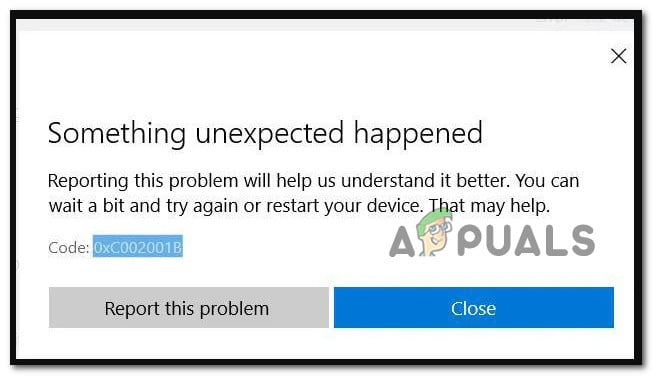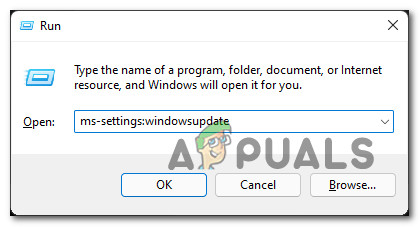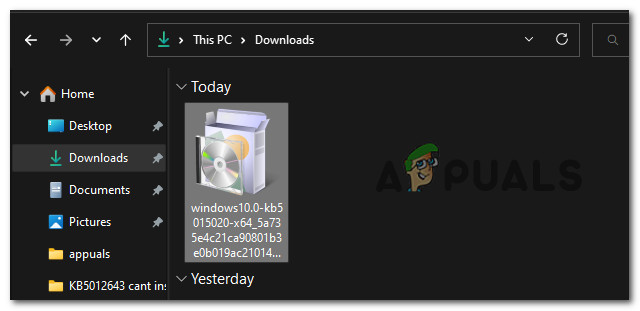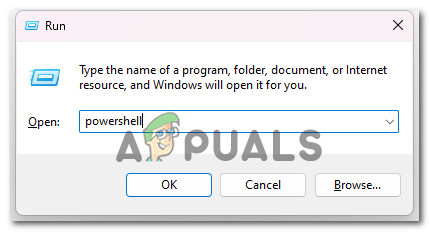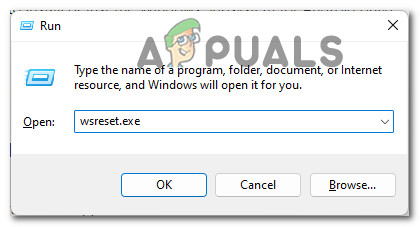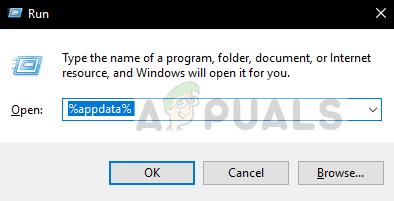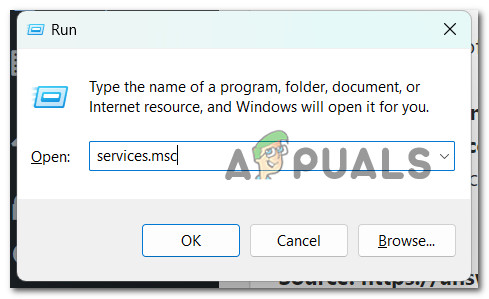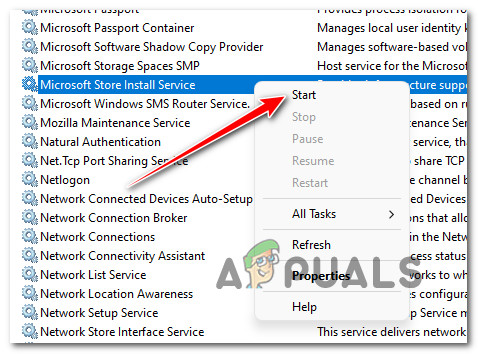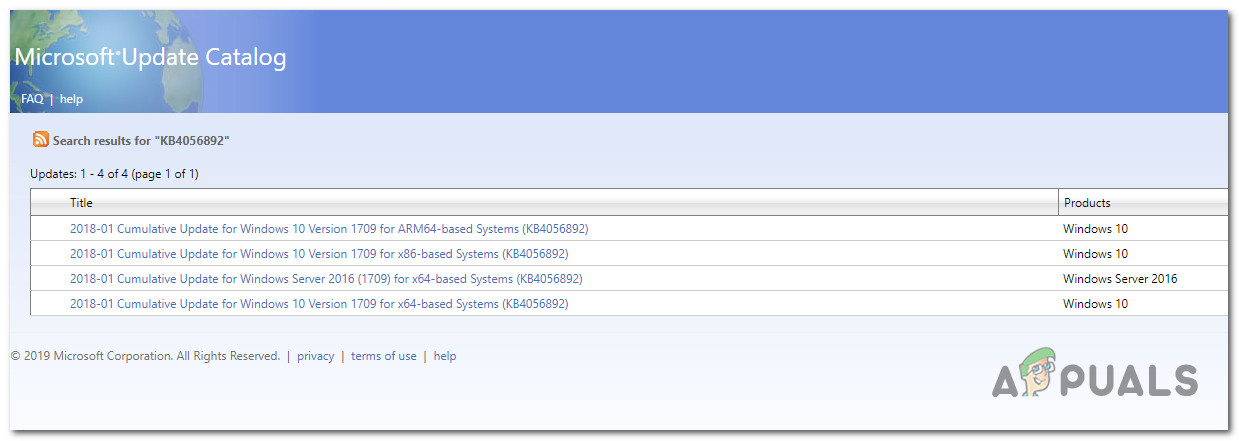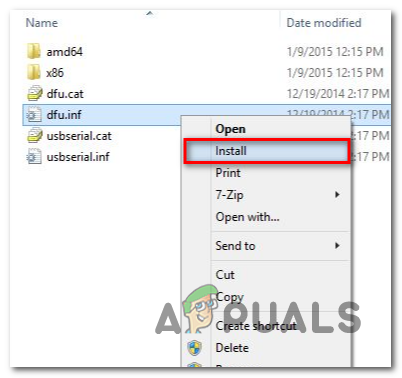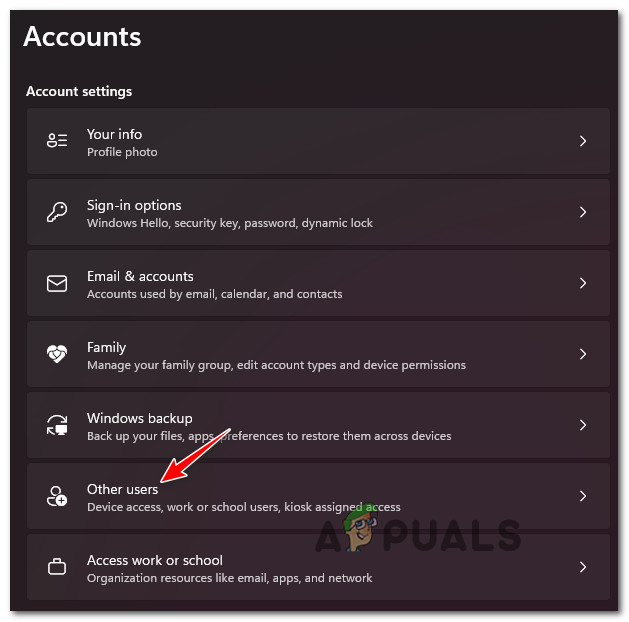After investigating this issue thoroughly, we realized that there are actually several different scenarios that might be responsible for this particular error code. Here’s a shortlist of culprits that you should look out for when troubleshooting the 0xC002001B Microsoft Store Error Code:
1. Run the Store App troubleshooter
If an automated repair approach already covers the cause of the Microsoft Store Error code 0xC002001B, running the Windows Store Apps Troubleshooter should allow you to quickly resolve the problem. Keep in mind that all native programs running on the Universal Windows Platform (UWP) share a set of requirements with the primary store component (Microsoft Store). You can expect these shared dependencies to become corrupted and affect the app retrieval process in certain situations (after a bad update, after some type of file corruption) – in situations like this, the best course of action is to run the Windows Apps Troubleshooter and let the automated repair component take care of the issue. Note: The Windows Apps Troubleshooter is a repair component with a ton of automated repair strategies that can be used if a recognizable scenario is found. If you haven’t already done so, run the Windows App Troubleshooter and apply the recommended remedy to correct any shared dependencies using the procedures below: If you’re still unable to bypass the Windows Store 0xC002001B error, move down to the next method below.
2. Install the pending Windows Update hotfix
Keep in mind that the most likely cause of this issue is a faulty Windows update, which Microsoft began distributing on May 10th. Note: This update resulted in this issue because it stopped some services from authenticating machine accounts on clients in an indirect manner (required when performing certain tasks in Store). Since then, Microsoft has developed a solution for the problem, which you may apply by simply installing all pending updates from Windows Update. So, before you do anything else, go to the Windows Update window and make sure that all pending updates (particularly cumulative and feature updates) have been installed. If Microsoft has recently released a remedy for this issue, applying all pending updates should immediately resolve the problem. If you find yourself in this situation, take these steps to install all of the pending Windows Updates on your Windows installation: If the problem is still not fixed, move down to the next method below.
3. Install the KB5015020 MSU hotfix manually (Windows 10 only)
If you’re having trouble with this on Windows 10, the first thing you should try is installing the KB5015020 MSU hotfix. A large number of people have confirmed that manually applying this update fixed the problem. In case this scenario looks like it could be applicable, start by accessing this official download MSU link to begin the download of the KB5015020 update for Windows 11. After the download is complete, navigate to the location where you previously downloaded the MSU hotfix, right-click on it and choose Run as administrator. Next, follow the on-screen instructions to complete the installation of the hotfix, then restart your PC at the end of this operation. Note: After installing this hotfix, you should have effectively dealt with the 0xC002001B error. If the same kind of issue is still occurring, move down to the next method below.
4. Update the Store Apps (Windows 11)
If you get this problem when trying to open specific Store apps (UWP apps), it’s most likely because a UWP app update is missing. If this scenario applies to you, you can solve the problem by updating all Store apps. You can do this manually, but our recommendation is to do it in bulk by reinstalling the entire Windows Store app package. You should expect this issue to arise in some cases as a result of an App package issue that impacts the entire fleet of UWP applications. In most cases, situations like these cannot be remedied by simply resetting the main Store component from the Windows UI menu. If you find yourself in this situation, the best thing to do is run a command (with admin rights) that will remove the Microsoft Store app package from all accounts and require a clean re-installation. In an elevated Powershell window, use a special Get-AppxPackage command to do this. Other users who had the same problem said that reinstalling the Windows Store software bundle via the Windows Terminal program fixed the problem completely. Important: This method is only confirmed to be effective on Windows 11. Here’s what you need to do: If the problem persists, move on to the next possible solution.
5. Re-Register the Store app
This issue can also occur if the Windows Store software has been de-registered, according to several impacted customers. If this is the case, the problem can be resolved by re-registering the Windows Store app for all accounts. In this situation, you should be able to resolve the issue by re-registering the Store app using Powershell. Several Windows 11 and Windows 10 users who were suffering from the 0xC002001B problem have confirmed that this solution works. Here’s how to re-register the Store app using an elevated Powershell window: If the 0xC002001B error reappears, proceed to the next possible solution below.
6. Reset the Windows Store Component
Badly cached data is probably the most typical cause of this type of behavior with the Microsoft Store on Windows 11 and Windows 10. Even though cached files are essential for your Microsoft Store installation (they improve reaction times and overall speed), removing them will not cause any underlying issues with the store component – after all, you can’t use Windows Store effectively if you’re having this problem. Fortunately, you won’t have to do it manually; instead, you can use WSReset.exe, a troubleshooting application, to reset and clear the Windows Store without affecting your account settings or removing your installed apps. All you have to do is execute this utility in an environment with administrative capabilities, and all damaged cached data that may be influencing Windows Store behavior should be removed. To use the WSreset.exe application to clear the Windows Store cache and refresh the Store component, follow the steps below: If the same 0xC002001B error is still occurring, move down to the next method below.
7. Clear the LocalCache folder manually
According to many afflicted customers, you may anticipate running into this problem if the Microsoft Store’s LocalCache folder includes damaged data that interferes with the installation of pending updates. In this scenario, manually clearing the LocalCache folder should resolve the problem. In case you’re still unable to make the error go away (even aver performing the wsreset procedure), follow the instructions below to manually clear the cache folder of the Windows Store: if you’re still struggling with the same 0xc002001b, move down to the next method below.
8. Enable the Microsoft Store Install Service
Another possibility is that the main service responsible for deploying infrastructure updates (Microsoft Store Install Service) has been deactivated from the Services panel. If this situation applies to you, make sure the Microsoft Store Install Service is turned on. Take a look at your Services page to confirm if this service is indeed deactivated before dismissing this possible culprit. Note: A number of system optimization software packages may temporarily stop this service in order to save system resources. To keep the Microsoft Store Install service enabled, follow these steps: If the same kind of issue is still occurring, move down to the next potential fix below.
9. Install the KB5011831 update manually
If you only get the KB5011831 issue when trying to install a pending update from the Microsoft Store, it’s likely that you’re dealing with corruption in the Windows Update component. In this instance, one approach to get around the problem is to manually install the pending update (via the Microsoft Update Catalog). Note: This approach has been proven to work on both Windows 10 and Windows 11. With this in mind, take the steps below to manually install all of the pending KB5011831 updates via the MUC infrastructure: If the method is still not fixed, move down to the next potential fix below.
10. Create a new user account
As it turns out, some form of system file corruption that affects the presently signed-in account can also create this problem. To remedy this issue, establish a new user account and check to see whether the issue has been repaired. Several customers who were having trouble opening games have reported that the problem was fixed after switching to a local Microsoft account. Important: Note that this action will remove any damaged dependencies presently associated with your current user profile. If you haven’t tried this already, follow the instructions below to create a new user account in an attempt to bypass the 0xc002001b error: If the problem is still occurring even after you migrated to a different account, move down to the next method below.
11. Perform a repair install
If none of the approaches above have worked for you, the only option is to go nuclear and replace all of the affected system file dependencies with healthy alternatives. If you’re dealing with system file corruption, your only alternatives are to perform a clean install or a repair install (in-place upgrade).
Repair install (in-place upgrade) – If you have the option, this is our official advice if you’re stuck in this situation. Only the system files will be touched during a repair install (in-place upgrade) (while keeping your personal files, user preferences apps & games)Clean install – If particular kernel processes are impacted, a clean install may be the best alternative, but it has the disadvantage of wiping away any personal data saved on the OS disk. However, you should be aware that if you go this option, you will lose all of your personal information.
12. Upgrade to Windows 11 (if applicable)
If you’ve come this far and you’re still unable to bypass the 0xc002001b error and you’re using Windows 10, one last thing you can do is to upgrade to Windows 11. There are a lot of users confirming that migrating to the latest Windows iteration meant that the 0xc002001b error related to the Windows Store component was finally resolved. If you’re looking for specific instructions on upgrading to Windows 11, follow this article.
How to Fix Windows 10 Store Error Code 0x80240437How to Fix ‘Error Code: 0x80D02017’ on Windows StoreHow to Fix Windows Store Error Code 0x803FB107[FIX] iTunes Store Error Code 0x80092013 on Windows
